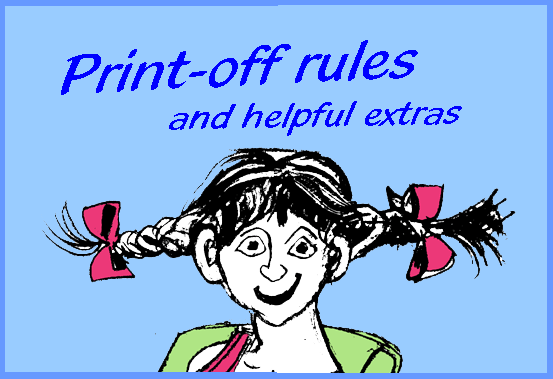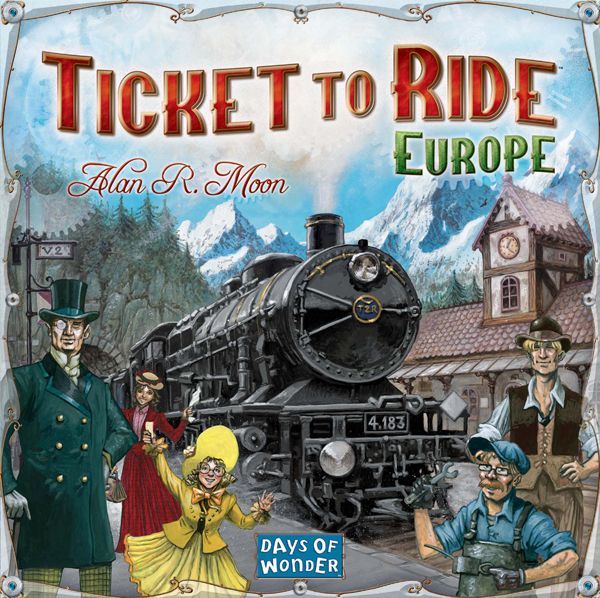
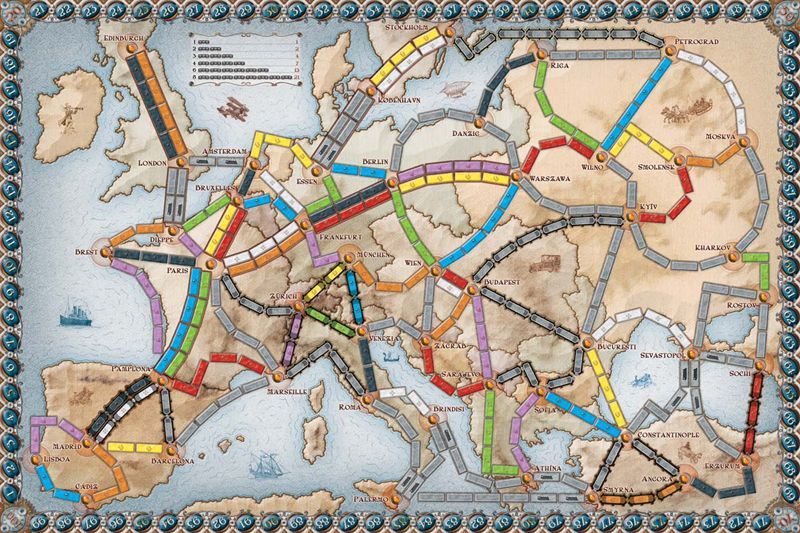
This is a game that’s highly rated by regular games players, but it’s also very attractive to casual players, not least because the rules can be learned reasonably quickly.
It’s all about catching trains … travelling between cities … riding the tracks of Europe’s railways ~ on a map that’s reminiscent of the way things were in the early 20th century.
Though it may not be a great challenge to learn how Ticket to Ride works, it takes a bit more time to get to grips with the strategies and subtleties ~ what to do, where to do it, and when. Some games mentors reckon that it may only take three turns for people to understand how it works, but learning how to make it work for you ~ a little longer perhaps, as it should be in any game that’s worth its salt.
There may be competition as travellers jostle for tickets. Nobody can be sure who’s going to opt for what journey and take all the available seats, leaving others sitting on their luggage, and feeling forlorn.
Each player has a marshalling yard full of their own carriages of their own colour. It’s these that they want to lay onto the tracks, showing that they now have a ticket to ride along a segment between cities.
To lay claim to a route, players play waggon-cards from their hand that match the colour of the route on which they want to travel.
They then place their carriages on the track.
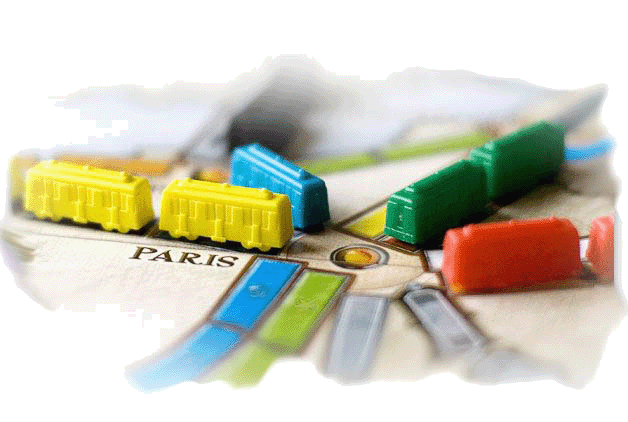
No complicated actions are called for. Each turn offers but four simple options to be considered.
So play moves at a reasonable pace, with not too much waiting around on cold and windy platforms.
In any turn, travellers may …
(A) take additional waggon-cards, or
(B) lay claim to a route between two cities and get a ticket to ride on it, or
(C) collect another destination-ticket for a special, points-gaining journey, or
(D) build a station.
Just one of four things – nothing more.
During play, travellers will collect waggon-cards (called “train car cards” in the rules), and play them when they want to grab tickets. King of these is the locomotive, which is a wild-card that can stand in for any of the other eight colours of waggon-cards
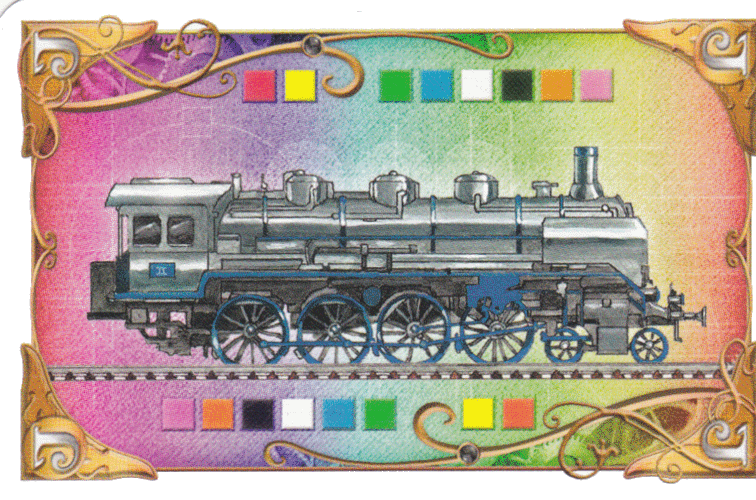
They’ll build stations, with the aim of making their longer journeys easier to achieve. That’s because they can board a train that’s belongs to another traveller if it uses their station: they can get a piggy back, in a sense.
Stations come into their own when thinking about what destination-tickets to aim to fulfil.
Everyone starts with at least a couple of tickets.
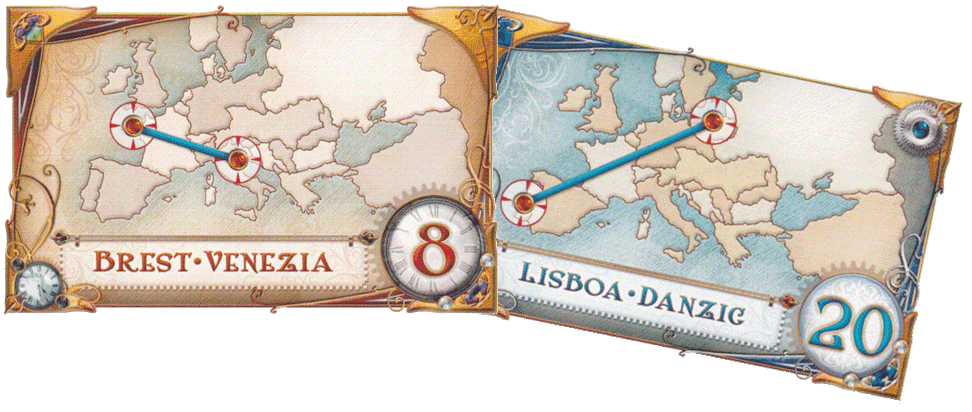
They’ll judiciously collect additional tickets in the hope of getting extra points for making journeys longer than those short city-to-city hops.
Some cover long journeys like Lisboa to Danzig, whilst others are shorter, like Brest to Venezia. There will be several routes for travellers to take.
The journeys span routes between several cities, and their completion brings substantial extra rewards: but if they’re not travelled, they count against you!
Completing ticketed journeys takes some planning and crafty play. Because there’s a limited number of routes between cities, players can find that they’re prevented from taking the nice and easy route that they dearly wanted to follow, because somebody else has grabbed the tickets and taken control of that track!
Ticket to Ride also includes the use of tunnels and ferries.
Tunnels generate a little suspense, because when someone’s claiming a tunnel-route between cities, they’re not sure they’re going to be able to get through it without penalty … it’s risky but potentially rewarding.
Ferriy routes must have at least one locomotive as part of the train.
So they’re power consuming, but they may lead to bigger opportunities.
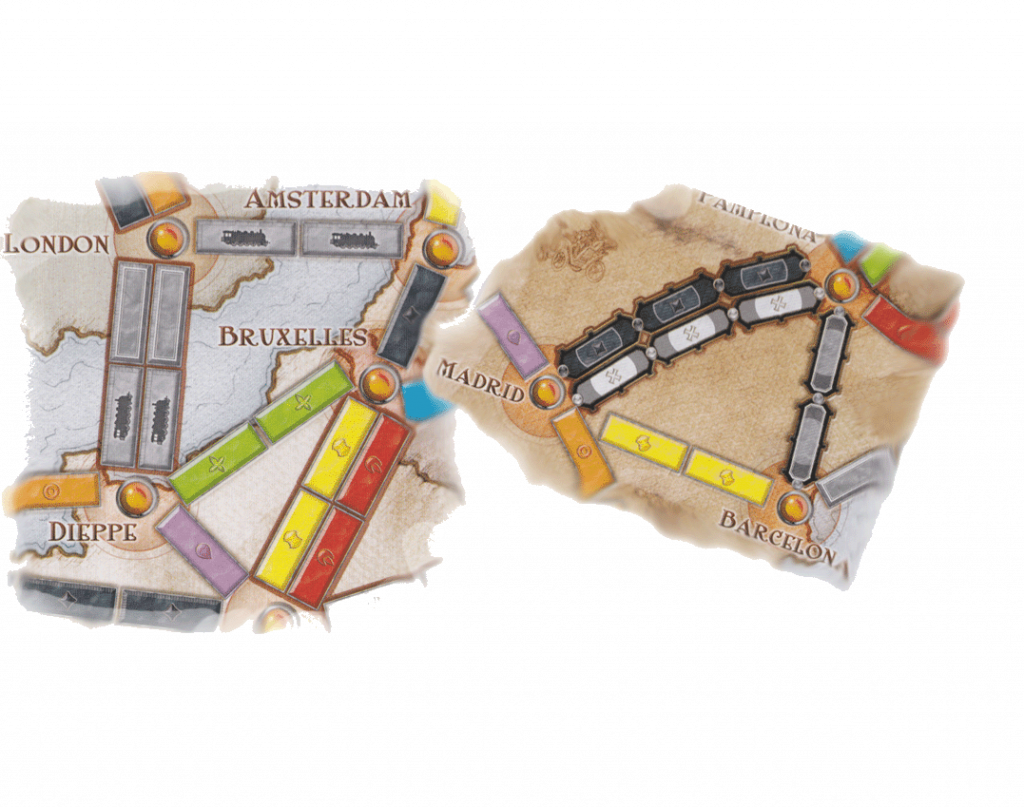
Ticket to Ride comes in several versions – Europe seems to be the favourite .
- good fun, without doubt
- a brief set of rules
- low complexity
- good for casual players, but much liked by keenies too
- replayable
- a good game for families & friends


